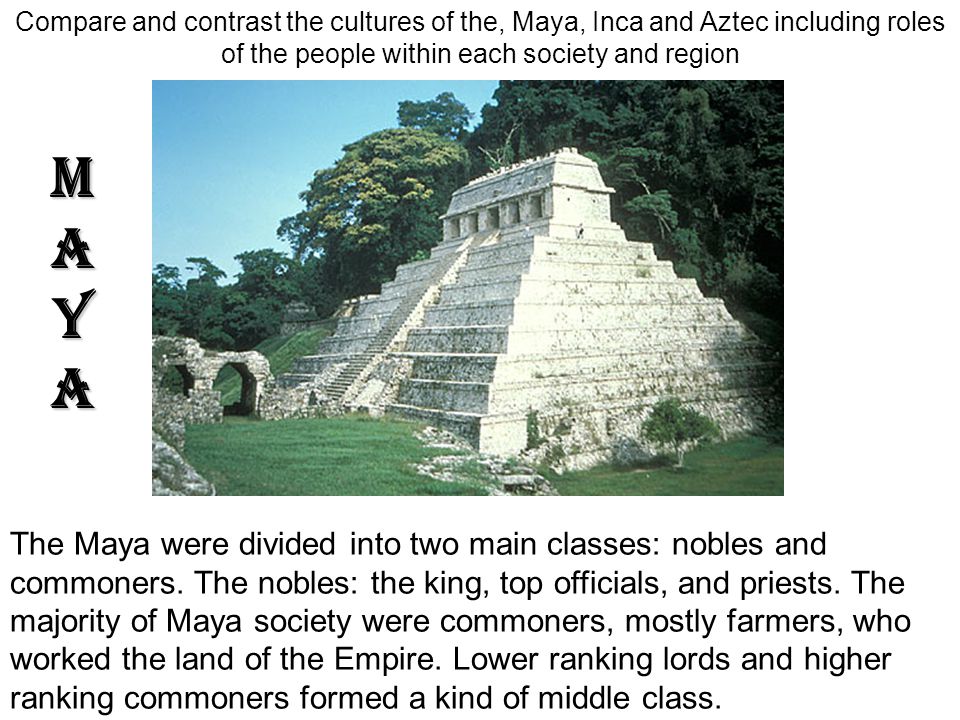This article compares the Mayan and Aztec civilizations of Mesoamerica. Both cultures were advanced for their time and had complex religious beliefs, agriculture techniques, and architectural achievements. The Mayans existed from 2000 BC to 900 AD and had interconnected city-states, while the Aztec civilization existed from the 14th to the 16th century and was a centralized state ruled by an emperor. Both cultures had complex pantheons of gods and goddesses, and agriculture was an important part of both societies. The Mayans are known for their pyramid structures and astronomical observatories, while the Aztecs had impressive temples and aqueducts.
The Mayan Civilization vs. The Aztec Civilization: A Comparison of Two Pre-Columbian Cultures
Introduction
The Mayan and Aztec civilizations were two of the most prominent pre-Columbian cultures in Mesoamerica. Both civilizations had a significant impact on the region and were highly advanced for their time, with complex religious beliefs, advanced agriculture techniques, and impressive architectural achievements.
Geography and Timeline
The Mayan civilization existed from about 2000 BC to 900 AD and was centered in present-day Mexico, Belize, Guatemala, Honduras, and El Salvador. The Aztec civilization, also known as the Mexica, existed from the 14th to the 16th century and was centered in the Valley of Mexico.
The Mayan civilization had several city-states that were interconnected, while the Aztec empire was a centralized state ruled by a powerful emperor.
Religion and Beliefs
The Mayans believed in many gods and goddesses, with a complex hierarchical system where certain gods were associated with specific activities, such as agriculture or war. Human sacrifice was also an integral part of Mayan religion.
The Aztecs also had a complex pantheon of gods and goddesses, and human sacrifice was an important part of their religion. They believed that their gods needed human blood to survive and would offer up prisoners of war as sacrifices.
Agriculture and Technology
The Mayans were highly skilled in agriculture, with advanced techniques such as terracing and crop rotation. They also had a sophisticated system of water management, including the construction of reservoirs and canals.
The Aztecs also had a strong agricultural base, with techniques such as chinampas, which were floating gardens constructed on lake beds. They also used a complex irrigation system to water their crops.
Both cultures had impressive technological achievements, including the invention of the calendar and the development of a written language.
Architecture
The Mayans are known for their impressive pyramid structures, such as El Castillo and the Temple of the Jaguar. They also built elaborate astronomical observatories and had a complex system of writing and hieroglyphs.
The Aztecs also had impressive architecture, with elaborate temples and palaces, such as the Templo Mayor and the Palace of Moctezuma II. They also had a complex system of aqueducts and canals.
Conclusion
While the Mayan and Aztec civilizations had many similarities, such as their complex religious beliefs and impressive technological achievements, there were also significant differences, such as their political systems and geographical locations. Both civilizations left a lasting impact on the region and continue to be studied and admired by scholars and tourists alike.
